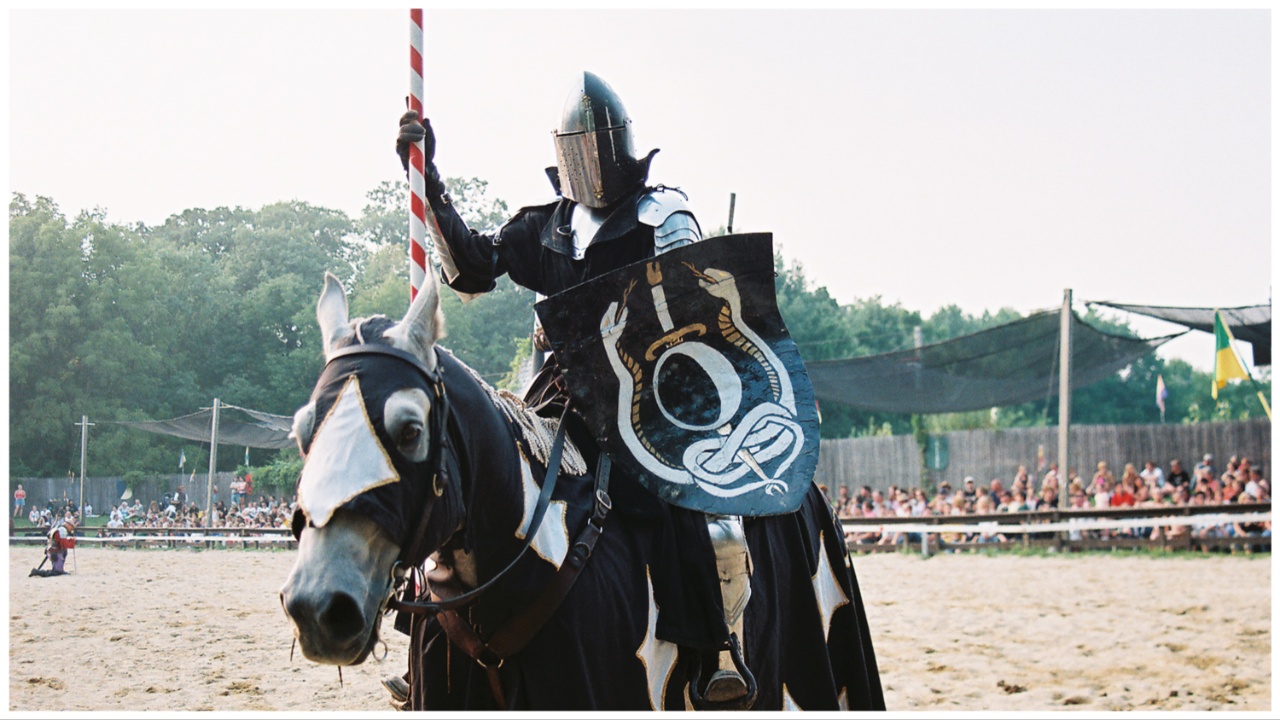How Counter Culture & Communism Created Renaissance Fairs
Turkey legs and LARPing, brought to you by Joseph McCarthy.

The first Renaissance fair (or faire, if you’re into it) in the United States took place just outside of Los Angeles in 1963. The creation of the faire was a direct result of the communist witch hunt headed up by Joseph McCarthy, which inadvertently created a community of progressively-minded creatives in the neighborhood of Laurel Canyon, California.
Phyllis Patterson was one such individual impacted by the House Un-American Activities Committee, which sought to root out communists and communist sympathizers across the country. Patterson was a schoolteacher in the California public school system, and in 1960, She was asked to sign a loyalty oath stating that she was not a member of the Communist Party. She refused. This led to her resignation from teaching, according to her son, Kevin Patterson. She didn’t know it at the time, but Phyllis Patterson’s next move would shape nerd culture for decades to come.
Phyllis took a job teaching theater in Laurel Canyon, focusing on commedia dell’arte and other 16th-18th century performance styles. She worked alongside other victims of McCarthy’s communist hysteria, many of whom were actors or other artists who had been blacklisted from Hollywood due to accusations of their involvement with the Communist Party. Before long, Phyllis saw an opportunity to bring this community’s unique skillset together in a big way.
Using her knowledge of Renaissance-era performance art and tapping into the talents of her newfound creative circle, Phyllis put together a plan to host a recurring Elizabethan country fair. The fair would feature food and drink from the time, costumes, vendors and artisans selling their wares, dancing, and, of course, theatrical performances. She began pooling resources and volunteer labor to make the dream a reality.
After hosting the first Renaissance Pleasure Faire on May 11, 1963, in North Hollywood, its popularity skyrocketed. Phyllis used the funds raised from the faire to support a local radio station and was able to host ensuing faires in various cities around the Los Angeles area. Her progress did not go without opposition, however: Christian groups protested the presence of the faire in one particularly conservative town located in Ventura County. Painting it as a haven for filth and debauchery, the group nearly stymied the 1967 faire. Always one to take things in stride, Phyllis calmly assured the city council that her event was meant as an educational opportunity for adults and children of all ages, and the faire went on as planned.
Not only was Phyllis’s Renaissance faire the first of many, but it was also the starting place for some of Hollywood’s biggest stars. Mark Hamill performed skits up to six times each day, and Harrison Ford worked as a camera operator for a documentary following two members of the rock band The Doors, who visited the faire.
As word got around about the faire, folks in other states opened their own faires and festivals. Popularity peaked in the late ’60s and early ’70s, and reenactment events started cropping up in nearly every state. Today, there are roughly 200 Renaissance festivals across the United States each year. The spirit of Phyllis’s original gathering of alternative creatives and progressive thinkers lives on in modern Ren Faire culture and isn’t going anywhere anytime soon.
(Via TikTok, featured image: FocusOnYou/Getty Images)
Have a tip we should know? [email protected]
